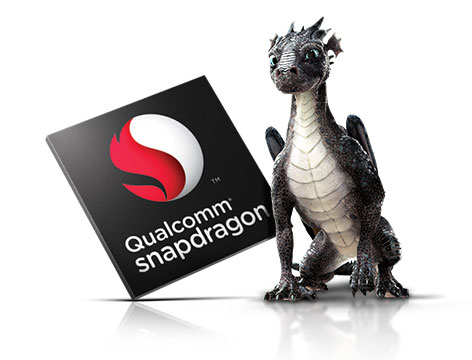Qualcomm Unveils Snapdragon 810 Developer Devices

The mobile chip maker wants to give device and software makers a look at the upcoming ARM-based 64-bit SoCs aimed at smartphones and tablets
Qualcomm might be a few months away from putting its upcoming 64-bit ARM-based Snapdragon 810 Ultra HD processor into commercially available smartphones and tablets, but officials with the chip maker want to get it into the hands of device and software makers now.
Qualcomm, the top chip maker for mobile devices, is rolling out early development platforms for the system-on-a-chip (SoC) in the forms of a 6.2-inch smartphone—or, really, a phablet—and a 10.1-inch tablet.
Hardware and software makers will be able to leverage the devices—which are due to ship in December—to help them develop, test and optimise their device designs and Android applications before putting their commercial products on store shelves.
 Move forward
Move forward
The move comes as mobile chip makers are moving to take advantage of ARM’s 64-bit ARMv8-A architecture for their smartphone and tablet products. Apple last year jumped ahead of everyone when it unveiled the 64-bit A7 chip—based on ARM’s new architecture—in the new (at the time) iPhone 5S smartphone. Samsung reportedly also is putting the 64-bit architecture into its Exynos 5433/Exynos 7 Octa.
Qualcomm reportedly isn’t expected to get its Snapdragon 810 into devices until the spring. However, the company wants to give developers a long look at it before then.
The development smartphone and tablet are based on the eight-core Snapdragon 810, Qualcomm’s Adreno 430 graphics technology and the company’s latest Hexagon digital signal processor (DSP). The Snapdragon 810 leverages ARM’s big.Little architecture, which uses a combination of high-performance and low-power cores—in this case four 64-bit Cortex-A57 cores and four more Cortex-A53 cores—that can offer users performance or power efficiency, depending on the workload.
It also will run the latest Android mobile operating system from Google and feature 4GB DDR4 memory. The smartphone is thin—9.9 millimeters—and offers a 6.2-inch Quad HD display, while supporting Ultra HD 4K H.264 and H.265 video. Connectivity is offered via 802.11ac WiFi and Bluetooth 4.1.
The tablet comes with much the same features, including the 13-megapixel rear camera and another 4-megapixel camera in the front—in a 10.1-inch device.
The smartphone is priced at $799, the tablet at $999.
The Snapdragon 810 is not the only product in which Qualcomm will leverage ARM’s 64-bit architecture. At the company’s annual analyst day Nov. 19, CEO Steve Mollenkopf said Qualcomm will get into the increasingly competitive ARM server SoC space. Mollenkopf said Qualcomm engineers have been working on the technology for a while, and that the move will enable the company to compete in a data center market he expects will be worth $15 billion by 2020.
Qualcomm’s entrance into the ARM-based server chip space will prove to be a threat to smaller vendors like Applied Micro, Cavium and Marvell Technologies, and will pit the company against other large chip makers, such as Advanced Micro Devices and Broadcom. It also will create a big, well-financed competitor for Intel, which is by far the dominant player in the server chip business, with more than 90 percent of the market.
What do you know about ARM? Take our quiz!
Originally published on eWeek.
 Move forward
Move forward